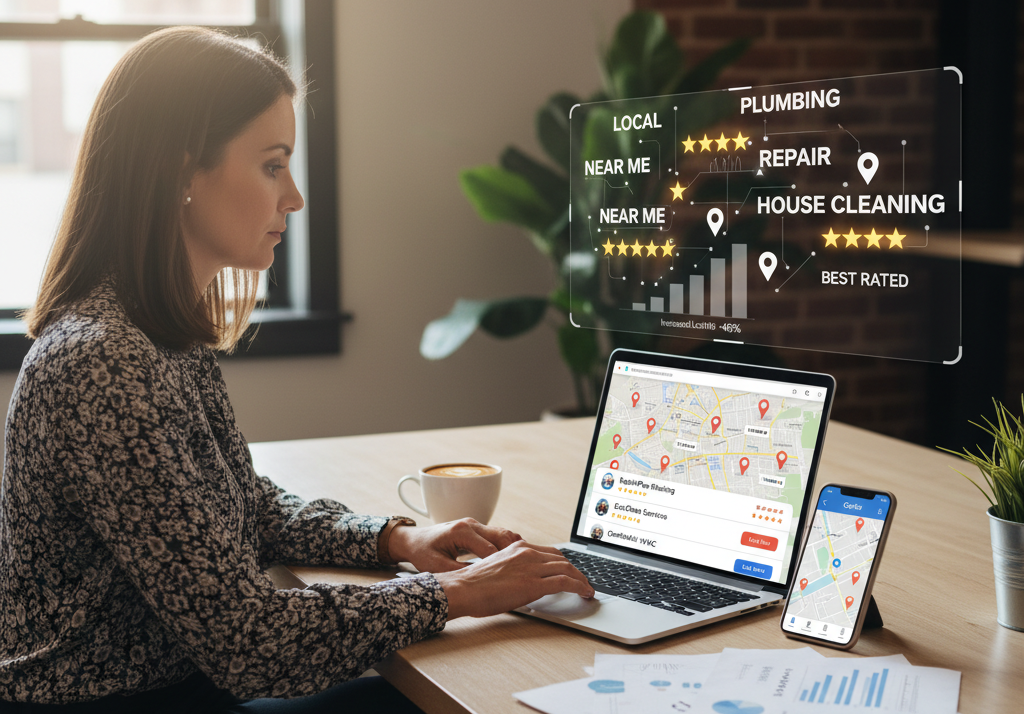9 Simple Ways to Make Your Content Mobile-Friendly (So Your Visitors Don’t Leave)
Ways to create mobile-friendly content

Let’s be honest—we live on our phones.
We shop, scroll, research, and make decisions right from the palm of our hands. So if your website content isn’t built with mobile users in mind, you’re leaving money—and opportunities—on the table.
The good news? Creating mobile-friendly content doesn’t require a developer or a complete redesign. With a few smart adjustments, you can make your site easier to use, faster to load, and more likely to convert.
Here are nine practical ways to make your content work better on mobile—and keep your audience engaged.
1. Start with Mobile-First Design
Instead of designing for desktop and trying to “make it work” on mobile later, flip that mindset. Think mobile-first.
That means building your layout to fit smaller screens by default—using flexible grids, stackable sections, and responsive fonts—then scaling up for larger devices.
It’s more than just how your site looks—Google actually favors mobile-optimized websites when it comes to search rankings. So it’s not only good for users—it’s good for visibility too.
2. Prioritize Speed (Because Mobile Users Don’t Wait)
When someone visits your site on their phone, every extra second of loading time increases the chance they’ll bounce. People aren’t patient—especially when they’re on the go.
Slow pages usually come down to oversized images, bloated code, or videos that auto-play and eat up bandwidth.
Simple fixes like compressing images, reducing unnecessary scripts, and enabling caching can make a noticeable difference. If your site feels sluggish, tools like Google PageSpeed Insights can break down exactly what’s causing the slowdown—and offer tips to speed things up.
3. Keep Your Images and Videos Light and Fast
Visuals are great for storytelling—but only if they don’t slow everything down.
Stick to efficient image formats like WebP or AVIF, and size your images based on how they’ll actually show up on the screen. If it’s just going in a small banner, there’s no need to upload a massive 3000-pixel-wide file—it only slows things down.
Videos should be embedded properly (never auto-play), and you should consider lazy-loading images—so they only load as users scroll.
Fast-loading visuals mean less frustration and more time engaging with your content.
4. Make Your Text Readable on Small Screens
Reading small text on a smartphone is frustrating. Squinting and pinching to zoom doesn’t make for a great first impression.
Your font should be at least 16px. Choose simple, readable fonts and make sure your text stands out clearly against the background—your readers (and their eyes) will thank you.
Big blocks of text can scare readers off—especially on mobile. Keep things light and readable with short paragraphs, clear subheadings, and easy-to-skim bullet points. Mobile readers skim—make sure they can.
5. Skip the Pop-Ups and Distractions
Those full-screen pop-ups that hijack the page and make it nearly impossible to close? Yeah, no one likes those. That’s a quick way to lose a visitor.
Especially on mobile, pop-ups can cover the content, be impossible to close, or just feel intrusive.
If you’re using them for email signups or promotions, keep them subtle. Wait until users scroll or spend time on the page, and always give them an easy way out.
The goal is to invite—not interrupt.
6. Simplify Your Navigation
On a mobile screen, too many options can be overwhelming.
Use a clean, collapsible menu (like the standard “hamburger” icon), and keep your top links limited to the most important pages—think “Services,” “About,” “Contact.”
Also consider sticky navigation—menus that stay at the top or bottom of the screen—so users don’t have to scroll back up every time they want to move around.
If visitors have to hunt for what they need, they won’t stick around—they’ll move on without a second thought.
7. Don’t Let Mobile Visitors Miss Out on Content
Some sites still strip down their content for mobile—and it’s a mistake.
These days, Google checks out your mobile site before anything else—so if it doesn’t look good or work well on a phone, your rankings could take a hit. If your mobile version is missing important text, images, or links, your SEO can take a hit.
So don’t hide content. Make sure everything that appears on your desktop version is also available and accessible on mobile.
8. Design for Everyone—Including Voice Search Users
Accessibility isn’t a nice-to-have anymore—it’s a must if you want your content to reach everyone who needs it.
Add alt text to all images so screen readers can describe them. Use clear, descriptive links instead of vague ones like “click here.” And structure your content with proper heading tags so it’s easy to follow.
This also makes your content easier to surface in voice search. If someone asks Siri or Google a question and your content is well-structured, it’s more likely to show up as a result.
9. Test on Real Phones, Not Just Emulators
Emulators are helpful, but nothing replaces testing your content on actual phones and tablets.
Tap through your site like a visitor would. Read the content, click the links, try the buttons. Is it smooth? Is anything hard to use?
Check it on different devices—iPhone and Android, newer phones and older ones. What works perfectly on one might glitch on another.
Catching issues before your visitors do is always worth the effort.
Mobile-Friendly Isn’t Optional Anymore—It’s Expected
Today’s audiences don’t wait around, and they definitely don’t pinch and zoom to read your content. They expect your site to just work—clean, quick, and seamless on any device, especially mobile.
The good news? You don’t need to overhaul everything to get there. The strategies we’ve shared aren’t rocket science—they’re practical steps that make your content more readable, more clickable, and more likely to turn visitors into actual customers.
Feeling stuck on where to begin? That’s exactly what we’re here for.
Build Content That Moves with Your Audience—Wherever They Are
At Digital Trebuchet, we specialize in helping businesses create content that not only looks great on mobile but actually performs. Whether you're updating a few pages or rethinking your entire digital strategy, we’ll help you build something that works beautifully across devices—and gets results.
If you’re ready to stop losing mobile traffic and start connecting with your audience where they really are, let’s talk.
Reach out to Digital Trebuchet and let’s build content that moves with your audience—wherever they go.
Ready to work with Digital Trebuchet?
Let's connect! We’re here to help.
Send us a message and we’ll be in touch.
Or give us a call today at 801-747-9569










